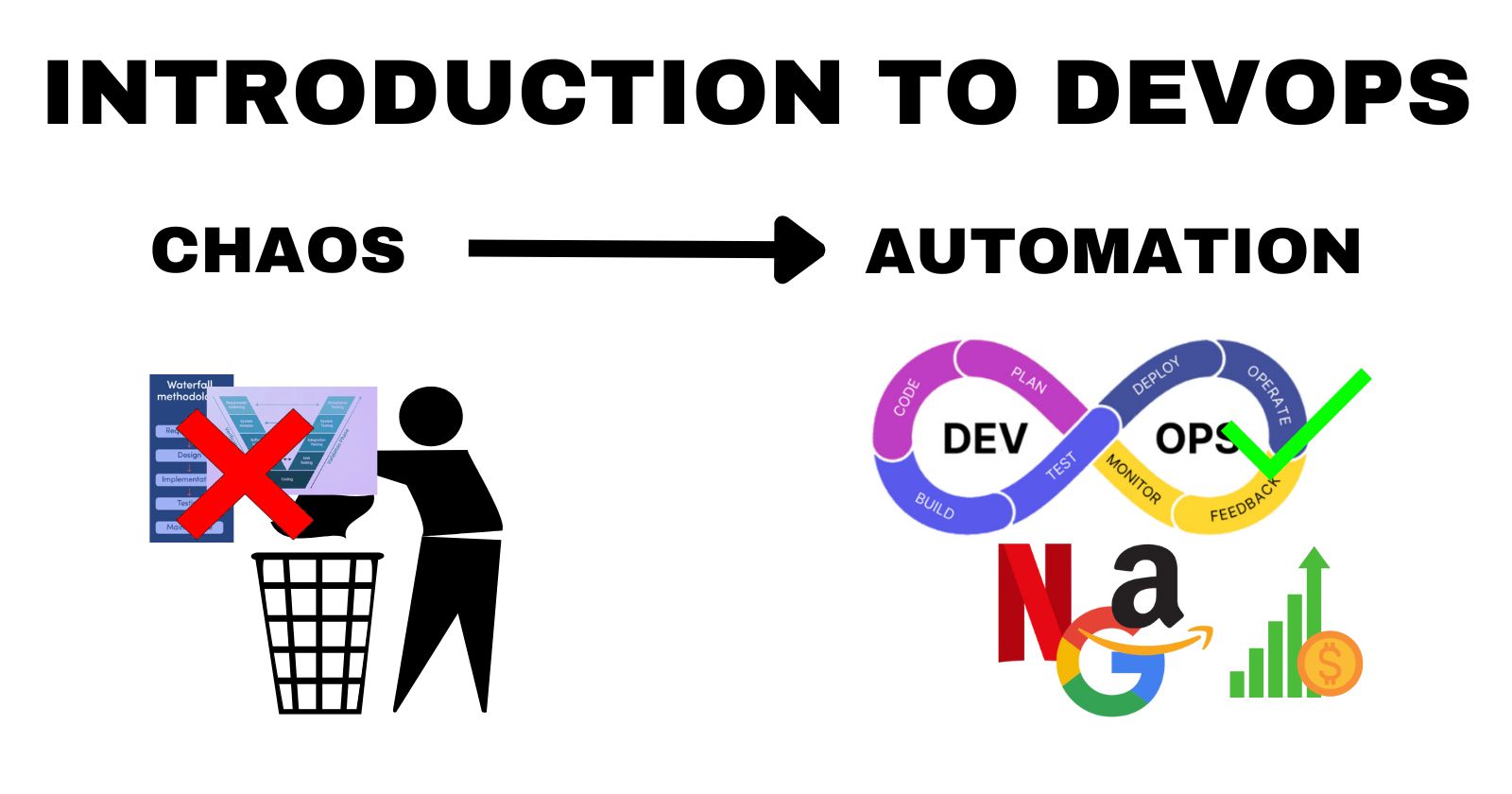💡From Chaos to Automation: How DevOps is Revolutionizing Tech
 Saksham Joshi
Saksham Joshi
Introduction
Developing a software used to be a chaotic process. Developers wrote code, testers found bugs late, and operations team struggled with providing a stable software. Delays in development, miscommunication between teams and lack of collaboration were common obstacles faced by companies.
But then came DevOps - a gamechanger that transformed this chaos into Automation.
Whether you are a developer, a student, or even someone with no IT background, this blog will help you understand how DevOps is revolutionizing tech, explained in such a way that even your grandma can understand. In the end you’ll see why DevOps has been a major aspect for companies. You will also see the tools which make it possible.
1. The Traditional Chaos - Why It Failed
Before DevOps, the traditional Software Development method involved a linear and disconnected approach. The development and operations team worked independently which created contradicting goals between the teams. The Development team worked on building software and applying changes to incorporate new features. On the other hand, the Operations team focused on stability, reliability and performance of the system. The two contradicting goals of the two teams resulted in a wall of confusion leading to:
Slow software releases - Deployment took months.
Frequent failures - Bugs were found too late.
Poor collaboration - Developers, testers, and operations team barely communicated.
Companies needed a better way to speed up the processes and delivery without compromising quality.
2. Traditional SDLC Models - The Old Way
Before DevOps, companies relied on the traditional SDLC (Software Development Lifecycle) models like:
Waterfall Model
One phase at a time - No moving forward until the previous step is completed.
Major drawback - Late bug detection made fixes expensive and time consuming.
V-Shape Model (Validation and Verification Model)
Testing was integrated earlier but…
Still too rigid - A minor mistake could delay the entire project.
Clearly companies needed something faster, something more flexible and efficient.
3. Agile - Increased Development Speed
To speed things up, companies adopted Agile Development Model.
Why Agile?
Breaks work into smaller parts (called sprints).
Allows testing and feedback after each phase.
Encourages better collaboration between teams.
Agile improved the development process but it did not fully address the needs of operations team leading to delayed deployments. That’s where DevOps comes in.
4. DevOps - Revolution Comes!
Agile Development method fixed speed but other aspects were falling apart.
DevOps was introduced, bridging gap between the Development and Operations team. It improved the application delivery speed by ensuring:
Proper automation - Testing, integration, and deployment to reduce human errors.
Quality maintenance - The original code is preserved.
Proper monitoring - Tracking the performance of the application.
Continuous testing - Automated feedback at all stages.
Improved collaboration - Brings teams together to improve communication.
5. How DevOps is Transforming Companies
Top tech giants like Netflix, Amazon, and Google rely on DevOps as it ensures:
Faster application delivery - Deploy updates in minutes, not months.
Fewer failures - Automated testing prevents last-minute crashes.
Better efficiency - Developers focus on building features instead of fixing broken deployments.
Companies that adopt DevOps outperform competitors by delivering better products faster.
6. DevOps Tools - Automation in Action
To make DevOps work, companies use powerful automation tools like:
Version Control Systems: Git, GitHub
Helps teams collaborate and track changes in code.
CI/CD: Jenkins, GitHub Actions
Automates testing and deployment, reducing manual errors.
Containerization: Docker
Packages apps so that they run the same anywhere, eliminating "it works on my machine" problems.
Orchestration: Kubernetes
Manages multiple containers, ensuring smooth scalability.
Monitoring: Prometheus & Grafana
Tracks system health and sends alerts when issues arise.
These tools automate the entire software lifecycle, making DevOps a game-changer for businesses.
Conclusion
DevOps has turned software development from a slow, chaotic process into a fast, automated, and efficient system. It bridges the gaps between teams, reduces errors, and speeds up delivery. In a world that demands quick and reliable tech, DevOps isn’t just an option—it’s a necessity.
Want to explore more about DevOps? Stay tuned for my upcoming blogs.
References, Resources:
Abhishek Veeramalla: https://youtu.be/Ou9j73aWgyE?si=z5wdK0qQkIK-NG-j
Kunal Kushwaha, FreeCodeCamp
Image Credits: https://www.bmc.com/ , https://reliasoftware.com/ , https://katalon.com/
Subscribe to my newsletter
Read articles from Saksham Joshi directly inside your inbox. Subscribe to the newsletter, and don't miss out.
Written by

Saksham Joshi
Saksham Joshi
Sophomore student @UPES Frontend Developer DevOps Enthusiast & Learner